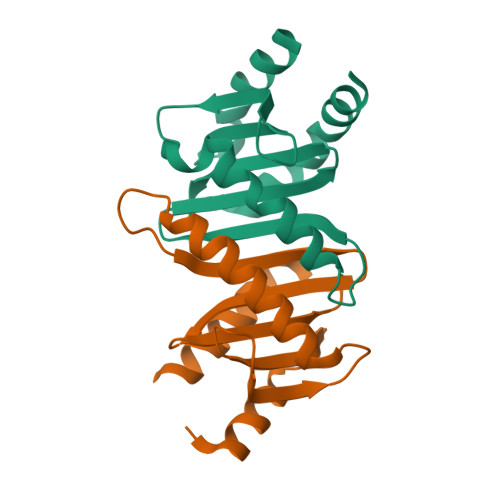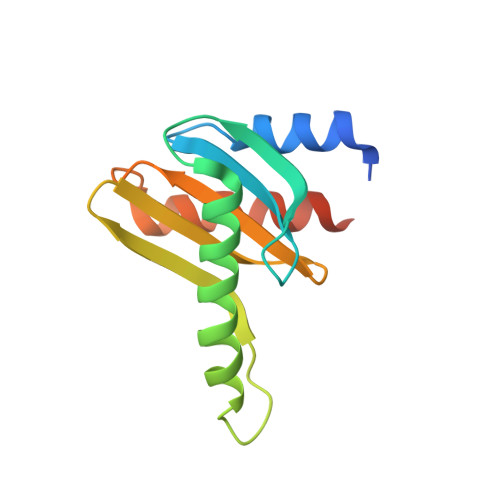Molecular dynamics-solvated interaction energy studies of protein-protein interactions: the MP1-p14 scaffolding complex.
Cui, Q., Sulea, T., Schrag, J.D., Munger, C., Hung, M.N., Naim, M., Cygler, M., Purisima, E.O.(2008) J Mol Biology 379: 787-802
- PubMed: 18479705
- DOI: https://doi.org/10.1016/j.jmb.2008.04.035
- Primary Citation of Related Structures:
2ZL1, 3CPT - PubMed Abstract:
Using the MP1-p14 scaffolding complex from the mitogen-activated protein kinase signaling pathway as model system, we explored a structure-based computational protocol to probe and characterize binding affinity hot spots at protein-protein interfaces. Hot spots are located by virtual alanine-scanning consensus predictions over three different energy functions and two different single-structure representations of the complex. Refined binding affinity predictions for select hot-spot mutations are carried out by applying first-principle methods such as the molecular mechanics generalized Born surface area (MM-GBSA) and solvated interaction energy (SIE) to the molecular dynamics (MD) trajectories for mutated and wild-type complexes. Here, predicted hot-spot residues were actually mutated to alanine, and crystal structures of the mutated complexes were determined. Two mutated MP1-p14 complexes were investigated, the p14(Y56A)-mutated complex and the MP1(L63A,L65A)-mutated complex. Alternative ways to generate MD ensembles for mutant complexes, not relying on crystal structures for mutated complexes, were also investigated. The SIE function, fitted on protein-ligand binding affinities, gave absolute binding affinity predictions in excellent agreement with experiment and outperformed standard MM-GBSA predictions when tested on the MD ensembles of Ras-Raf and Ras-RalGDS protein-protein complexes. For wild-type and mutant MP1-p14 complexes, SIE predictions of relative binding affinities were supported by a yeast two-hybrid assay that provided semiquantitative relative interaction strengths. Results on the MP1-mutated complex suggested that SIE predictions deteriorate if mutant MD ensembles are approximated by just mutating the wild-type MD trajectory. The SIE data on the p14-mutated complex indicated feasibility for generating mutant MD ensembles from mutated wild-type crystal structure, despite local structural differences observed upon mutation. For energetic considerations, this would circumvent costly needs to produce and crystallize mutated complexes. The sensitized protein-protein interface afforded by the p14(Y56A) mutation identified here has practical applications in screening-based discovery of first-generation small-molecule hits for further development into specific modulators of the mitogen-activated protein kinase signaling pathway.
Organizational Affiliation:
Biotechnology Research Institute, National Research Council Canada, 6100 Royalmount Avenue, Montreal, Quebec, Canada.

















